Nature Communications化学类精选文章编辑推荐——无机和物理化学
Victoria Richards 推荐
1. A robust zirconium amino acid metal-organic framework for proton conduction
Sujing Wang, Mohammad Wahiduzzaman, Louisa Davis, Antoine Tissot, William Shepard, Jérôme Marrot, Charlotte Martineau-Corcos, Djemel Hamdane, Guillaume Maurin, Sabine Devautour-Vinot & Christian Serre
https://www.nature.com/articles/s41467-018-07414-4
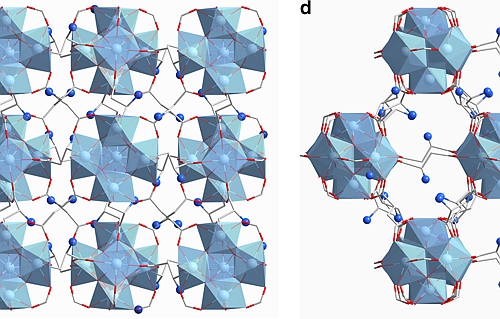
Metal-organic frameworks are promising materials for proton exchange membrane fuel cells, but cumbersome ligand preparation and use of toxic metals or solvents hinders their application. Here, the authors report the green synthesis of a zirconium, amino acid-based MOF that displays high proton conductivity and excellent stability.
2. Double dative bond between divalent carbon(0) and uranium
Wei Su, Sudip Pan, Xiong Sun, Shuao Wang, Lili Zhao, Gernot Frenking & Congqing Zhu
https://www.nature.com/articles/s41467-018-07377-6
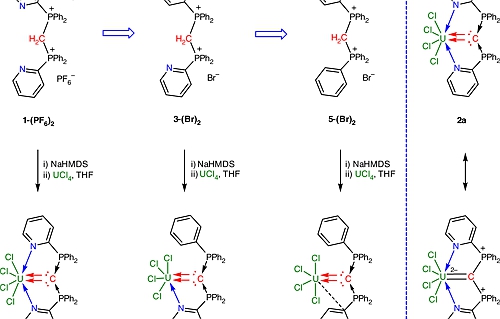
While chemical bonding between carbon and the d- and p-block elements is relatively well-studied, that between carbon and the f-block elements remains comparatively poorly understood. Here, the authors synthesize a series of uranium−carbone complexes in which carbon forms an unprecedented double dative bond to uranium.
3. Metal-organic framework glasses with permanent accessible porosity
Chao Zhou, Louis Longley, Andraž Krajnc, Glen J. Smales, Ang Qiao, Ilknur Erucar, Cara M. Doherty, Aaron W. Thornton, Anita J. Hill, Christopher W. Ashling, Omid T. Qazvini, Seok J. Lee, Philip A. Chater, Nicholas J. Terrill, Andrew J. Smith, Yuanzheng Yue, Gregor Mali, David A. Keen, Shane G. Telfer & Thomas D. Bennett
https://www.nature.com/articles/s41467-018-07532-z

Metal–organic framework glasses have emerged as a new family of melt-quenched glass, but have yet to display the accessible porosity of their crystalline counterparts. Here, Bennett and colleagues report that glasses derived from ZIF-76 parent materials possess 4 – 8 Å pores and exhibit reversible gas adsorption.
4. Cooperative adsorption of carbon disulfide in diamine-appended metal–organic frameworks
C. Michael McGuirk, Rebecca L. Siegelman, Walter S. Drisdell, Tomče Runčevski, Phillip J. Milner, Julia Oktawiec, Liwen F. Wan, Gregory M. Su, Henry Z. H. Jiang, Douglas A. Reed, Miguel I. Gonzalez, David Prendergast & Jeffrey R. Long
https://www.nature.com/articles/s41467-018-07458-6

The large-scale production of CS2 presents both environmental and biological hazards, yet adsorbents capable of CS2 capture remain scarcely explored. Here, Long and colleagues demonstrate that CS2 is adsorbed in diamine-appended metal–organic frameworks through a cooperative and chemically specific insertion process.
5. Light-controlled switching of the spin state of iron(III)
Sreejith Shankar, Morten Peters, Kim Steinborn, Bahne Krahwinkel, Frank D. Sönnichsen, Dirk Grote, Wolfram Sander, Thomas Lohmiller, Olaf Rüdiger & Rainer Herges
https://www.nature.com/articles/s41467-018-07023-1
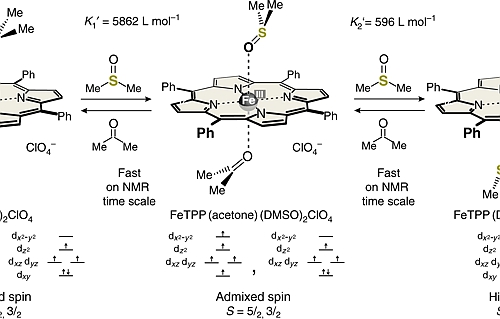
Controlled switching of the spin state of transition metal ions is key in many enzymatic reactions, but difficult to replicate in synthetic systems. Here the authors report on an iron(III) porphyrin with a photochromic axial ligand that, in solution, reversibly switches between low-spin and high-spin upon irradiation with two different wavelengths.
6. Continuous negative-to-positive tuning of thermal expansion achieved by controlled gas sorption in porous coordination frameworks
Josie E. Auckett, Arnold A. Barkhordarian, Stephen H. Ogilvie, Samuel G. Duyker, Hubert Chevreau, Vanessa K. Peterson & Cameron J. Kepert
https://www.nature.com/articles/s41467-018-06850-6
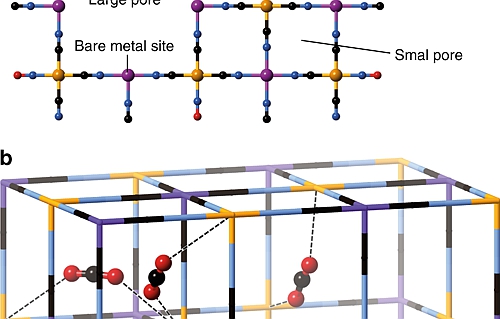
Achieving control over the thermomechanical properties of functional materials is desirable, yet remains highly challenging. Here, the authors demonstrate continuous negative-to-positive tuning of thermal expansion in two Prussian blue analogues, by varying the concentration of adsorbed CO2.
Ariane Vartanian 推荐
1. Interconvertible vanadium-seamed hexameric pyrogallol[4]arene nanocapsules
Kongzhao Su, Mingyan Wu, Daqiang Yuan & Maochun Hong
https://www.nature.com/articles/s41467-018-07427-z
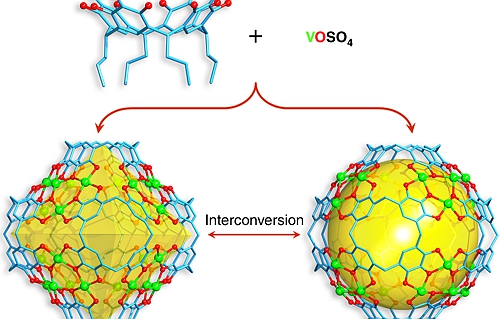
Adapting the cavity of a coordination capsule generally involves the addition or removal of subcomponents. Here, the authors report two vanadium-organic coordination nanocapsules with the same number of components but variable cavity sizes—an expanded ball and contracted octahedron—whose solvent-controlled interconversion is attributed to the versatile coordination geometry of the vanadium centers.
2. Dehydrative π-extension to nanographenes with zig-zag edges
Dominik Lungerich, Olena Papaianina, Mikhail Feofanov, Jia Liu, Mirunalini Devarajulu, Sergey I. Troyanov, Sabine Maier & Konstantin Amsharov
https://www.nature.com/articles/s41467-018-07095-z
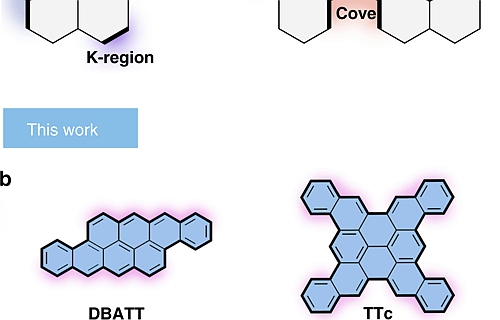
Nanographenes with zig-zag peripheries are expected to have unique electronic properties, but their application in organic electronics has been curbed by their difficult synthesis. Here, the authors develop a facile route to zig-zag nanographenes based on a key dehydrative π-extension reaction.
3. Induced-fit expansion and contraction of a self-assembled nanocube finely responding to neutral and anionic guests
Yi-Yang Zhan, Tatsuo Kojima, Takashi Nakamura, Toshihiro Takahashi, Satoshi Takahashi, Yohei Haketa, Yoshiaki Shoji, Hiromitsu Maeda, Takanori Fukushima & Shuichi Hiraoka
https://www.nature.com/articles/s41467-018-06874-y
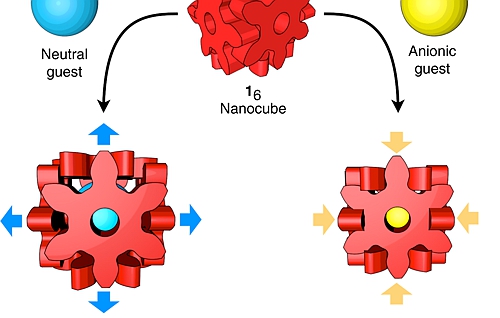
Induced-fit binding, common in biological systems, is still relatively rare in artificial hosts. Here, the authors assemble a molecular cube from six gear-shaped faces, whose interdigitated design allows the cube to expand and contract in response to the size, shape, and charge of a guest molecule.
4. Two-dimensional tessellation by molecular tiles constructed from halogen–halogen and halogen–metal networks
Fang Cheng, Xue-Jun Wu, Zhixin Hu, Xuefeng Lu, Zijing Ding, Yan Shao, Hai Xu, Wei Ji, Jishan Wu & Kian Ping Loh
https://www.nature.com/articles/s41467-018-07323-6

Molecular tessellations of complex tilings are difficult to design and construct. Here, the authors show that molecular tessellations can be formed from a single building block that gives rise to two distinct supramolecular phases, whose self-similar subdomains serve as tiles in the periodic tessellations.
5. Mass spectrometry and Monte Carlo method mapping of nanoparticle ligand shell morphology
Zhi Luo, Yanfei Zhao, Tamim Darwish, Yue Wang, Jing Hou & Francesco Stellacci
https://www.nature.com/articles/s41467-018-06939-y
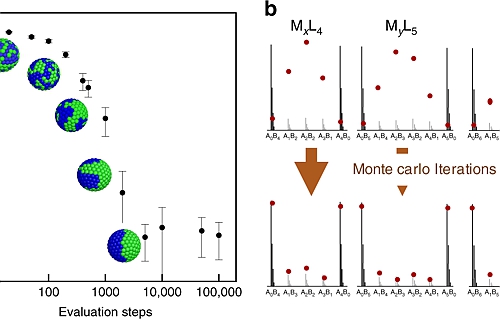
Determining the arrangement of ligands on a nanoparticle is challenging, given the limitations of existing characterization tools. Here, the authors describe an accessible method for resolving ligand shell morphology that uses simple MALDI-TOF mass spectrometry measurements in conjunction with an open-access Monte Carlo fitting program.
6. Design and self-assembly of hexahedral coordination cages for cascade reactions
Jingjing Jiao, Zijian Li, Zhiwei Qiao, Xu Li, Yan Liu, Jinqiao Dong, Jianwen Jiang & Yong Cui
https://www.nature.com/articles/s41467-018-06872-0

Supramolecular containers are promising enzyme mimics, but they currently accommodate only a limited range of chemical transformations. Here, the authors describe coordination cages that catalyze two-component cascade reactions without relying on an external or encapsulated catalytic species.
Adam West 推荐
1. In situ monitoring of molecular aggregation using circular dichroism
Haoke Zhang, Xiaoyan Zheng, Ryan T. K. Kwok, Jia Wang, Nelson L. C. Leung, Lin Shi, Jing Zhi Sun, Zhiyong Tang, Jacky W. Y. Lam, Anjun Qin & Ben Zhong Tang
https://www.nature.com/articles/s41467-018-07299-3
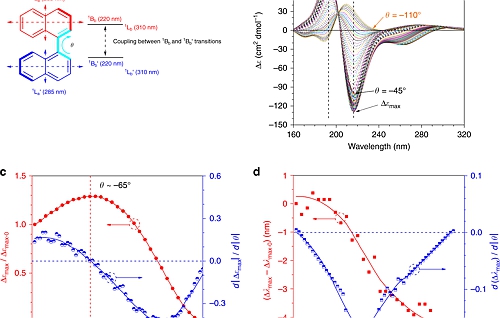
Molecular aggregation is a widespread and important process in physiological metabolism, but details regarding conformational changes during the process are hard to probe. Here, the authors use circular dichroism to monitor in-situ the conformational changes occurring during molecular aggregation.
2. Vibrational fingerprint of localized excitons in a two-dimensional metal-organic crystal
M. Corva, A. Ferrari, M. Rinaldi, Z. Feng, M. Roiaz, C. Rameshan, G. Rupprechter, R. Costantini, M. Dell’Angela, G. Pastore, G. Comelli, N. Seriani & E. Vesselli
https://www.nature.com/articles/s41467-018-07190-1
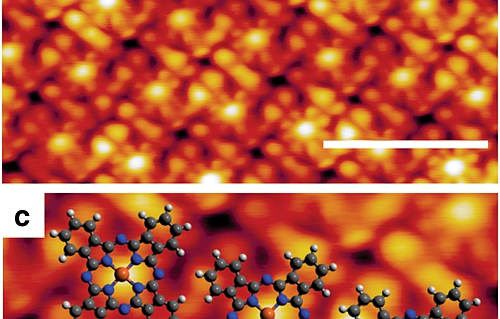
Long-lived excitons in a two-dimensional metal-organic crystal can be produced by visible light and detected by infrared radiation. Here, the authors show that the excitonic state of a biomimetic macrocycle can be ‘read’ by measuring the vibrations of an adsorbed ligand.
3. Ultrafast carbon monoxide photolysis and heme spin-crossover in myoglobin via nonadiabatic quantum dynamics
Konstantin Falahati, Hiroyuki Tamura, Irene Burghardt & Miquel Huix-Rotllant
https://www.nature.com/articles/s41467-018-06615-1
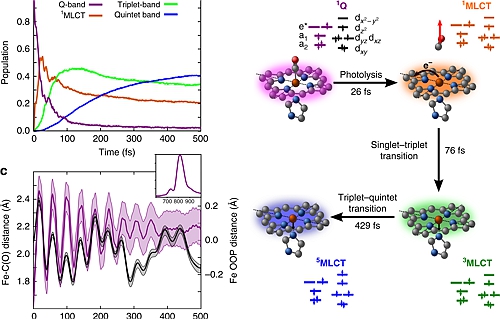
Myoglobin bound to carbon monoxide undergoes an ultrafast light-induced reaction, which ends up in a photolyzed carbon monoxide and a spin transition of the iron center. Here, the authors employ quantum wavepacket dynamics to show that photolysis precedes the spin transition, a mechanism dominated by strong electron-nuclear couplings.
4. Dynamics of individual molecular shuttles under mechanical force
Teresa Naranjo, Kateryna M. Lemishko, Sara de Lorenzo, Álvaro Somoza, Felix Ritort, Emilio M. Pérez & Borja Ibarra
https://www.nature.com/articles/s41467-018-06905-8
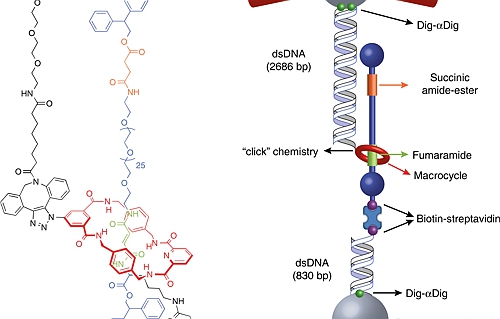
Molecular shuttles are bi-stable and stimuli-responsive systems that are considered potential elements for molecular machinery. Here, the authors use optical tweezers to measure the force dependent real-time kinetics of individual molecular shuttles under aqueous conditions.
5. Spatially-resolved fluorescence-detected two-dimensional electronic spectroscopy probes varying excitonic structure in photosynthetic bacteria
Vivek Tiwari, Yassel Acosta Matutes, Alastair T. Gardiner, Thomas L. C. Jansen, Richard J. Cogdell & Jennifer P. Ogilvie
https://www.nature.com/articles/s41467-018-06619-x
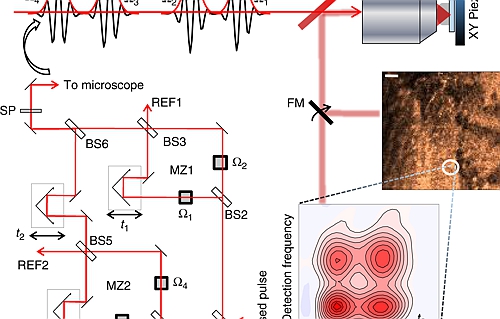
2D electronic spectroscopy enables a spatially-averaged view of the electronic structure of a heterogeneous system. Here, the authors extend it to sub-micron resolution and ~106 times better sensitivity, to resolve spatially varying excitonic structure in a heterogeneous mixture of photosynthetic cells.
6. Unravelling the structure of glycosyl cations via cold-ion infrared spectroscopy
Eike Mucha, Mateusz Marianski, Fei-Fei Xu, Daniel A. Thomas, Gerard Meijer, Gert von Helden, Peter H. Seeberger & Kevin Pagel
https://www.nature.com/articles/s41467-018-06764-3
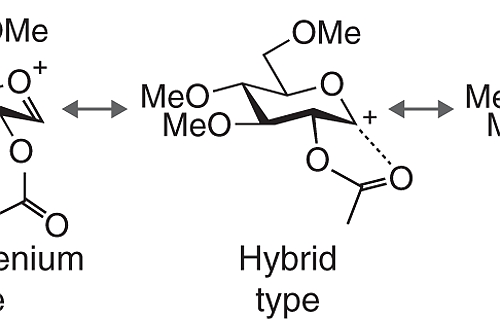
Glycosyl cations are key intermediates in glycosylation reactions, but their structure has remained elusive due to their transient nature. Here, the authors perform an in-depth structural analysis and report that C2-participating protective groups induce acetoxonium cations with distinct ring conformations.
查看更多编辑推荐文章,请点击链接:http://t.cn/EyZ5c36
如果篇首注明了授权来源,任何转载需获得来源方的许可!如果篇首未特别注明出处,本文版权属于 X-MOL ( x-mol.com ), 未经许可,谢绝转载!



























 京公网安备 11010802027423号
京公网安备 11010802027423号